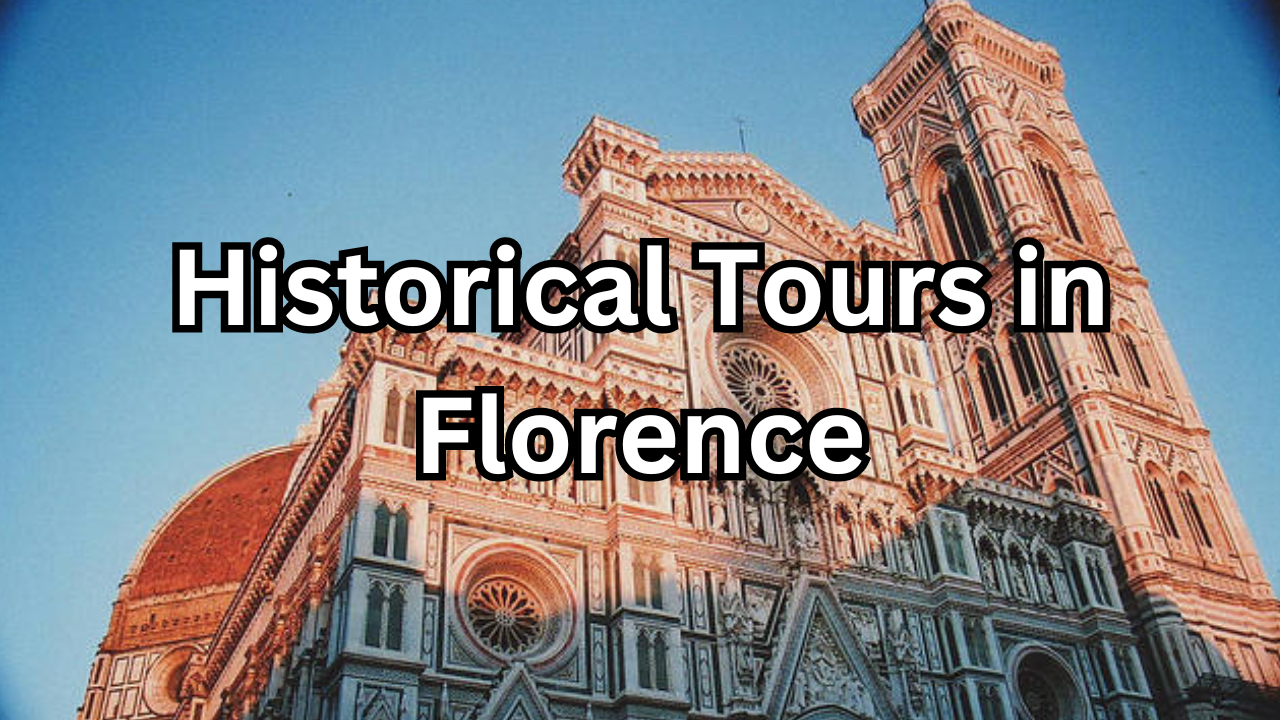Table of Contents
Introduction
Florence, the capital of Italy’s Tuscany region, is a city steeped in history, art, and culture. Its rich heritage as a center of Renaissance art and architecture makes it a prime destination for history enthusiasts, art lovers, and cultural explorers. One of the best ways to delve into Florence’s fascinating past is through historical tours that offer immersive experiences and insights into the city’s historical significance.
These tours not only showcase iconic landmarks but also provide a deeper understanding of Florence’s evolution from a medieval powerhouse to a beacon of artistic innovation during the Renaissance. From walking tours that lead you through the narrow cobblestone streets to art tours highlighting masterpieces by renowned artists, Florence’s historical tours offer a diverse range of experiences catering to different interests and passions.
In this exploration of historical tours in Florence, we’ll delve into the various types of tours available, from walking tours that cover major landmarks to art tours focusing on world-class museums like the Uffizi Gallery and Accademia Gallery. We’ll also uncover the architectural wonders of Florence, including the majestic Florence Cathedral and the historic Palazzo Vecchio.
Moreover, we’ll delve into tours that shed light on the influential Medici family, who played a pivotal role in shaping Florence’s cultural landscape. Cultural and heritage tours, such as food tours and Jewish heritage tours, will also be explored to showcase the diverse facets of Florence’s historical and cultural tapestry.
Join us on this journey through the historical tours of Florence, where every cobblestone tells a story, every artwork whispers history, and every architectural marvel reveals the city’s enduring legacy.
Brief Overview of Florence’s Historical Significance
Florence stands as a testament to the triumphs of human creativity and intellect, showcasing a history that has shaped the course of Western civilization. As the birthplace of the Renaissance, Florence holds immense historical significance, serving as a crucible for artistic, architectural, and intellectual advancements that reverberated across Europe and beyond.
Founded by the Romans in the first century BCE, Florence flourished as a medieval city-state, achieving economic prosperity through trade and banking. However, it was during the Renaissance, particularly in the 14th to 16th centuries, that Florence reached its zenith as a cultural powerhouse. This period saw the emergence of luminaries like Leonardo da Vinci, Michelangelo, Botticelli, and Brunelleschi, whose groundbreaking works revolutionized art, science, and philosophy.
Florence’s influential Medici family, with their patronage of artists and scholars, played a pivotal role in fostering this cultural renaissance. Their support led to the creation of masterpieces like Michelangelo’s David, Botticelli’s Birth of Venus, and Leonardo’s Mona Lisa, which continue to captivate audiences worldwide.
The city’s architectural marvels, such as the Florence Cathedral with Brunelleschi’s Dome and the Palazzo Vecchio, reflect the wealth and power of its medieval and Renaissance rulers. These structures not only serve as symbols of Florence’s grandeur but also as repositories of its history, showcasing the artistic and architectural innovations of their respective eras.
Importance of Historical Tours in Florence Heritage
Historical tours in Florence play a crucial role in unlocking the secrets of its rich heritage and historical significance. These tours offer a firsthand exploration of the city’s iconic landmarks, allowing visitors to immerse themselves in its storied past and gain a deeper appreciation for its cultural legacy.
By walking the same streets once traversed by Leonardo da Vinci or entering the halls of the Uffizi Gallery where masterpieces were unveiled, participants of historical tours are transported back in time, connecting with Florence’s illustrious history on a personal level. Guides knowledgeable in art, history, and architecture provide valuable insights, contextualizing each site within the broader narrative of Florence’s evolution.
Moreover, historical tours facilitate encounters with lesser-known gems and hidden treasures, unveiling hidden stories and nuances that contribute to a comprehensive understanding of Florence’s heritage. Whether exploring the Medici family’s palaces, delving into the culinary traditions of Tuscany, or tracing the city’s Jewish heritage, these tours offer a multi-faceted perspective that enriches one’s cultural experience.
In essence, historical tours serve as gateways to Florence’s past, offering a dynamic and engaging means of exploring its history, art, and culture. They inspire curiosity, foster appreciation, and leave indelible impressions that resonate long after the tour ends, making them indispensable for anyone seeking to unravel the mysteries of Florence’s timeless allure.
Walking Tours
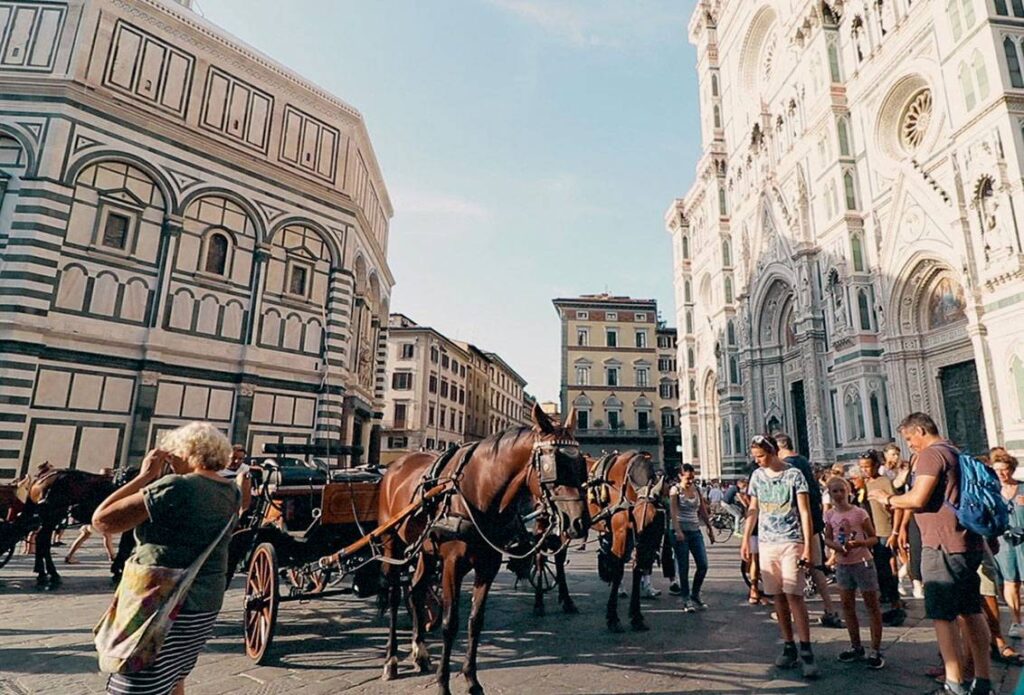
Walking tours in Florence offer a captivating journey through the city’s historical heart, where every step unveils centuries of art, culture, and architectural splendor. Guided by knowledgeable experts, participants wander through narrow cobblestone streets, passing by iconic landmarks such as the Ponte Vecchio, Piazza della Signoria, and the Florence Cathedral (Duomo). These tours provide a deeper understanding of Florence’s medieval and Renaissance history, highlighting the lives of influential figures like Leonardo da Vinci, Dante Alighieri, and the powerful Medici family. As visitors soak in the vibrant atmosphere of bustling piazzas and ornate churches, they gain insights into the city’s artistic legacy and political intrigue, making walking tours an immersive and enriching experience for history enthusiasts and cultural explorers alike.
Highlights of Popular Walking Tours
- Popular walking tours in Florence typically cover a range of iconic sites that showcase the city’s rich history and cultural heritage. Among these sites are:
- Ponte Vecchio: Florence’s famous medieval bridge lined with shops and offering picturesque views of the Arno River.
- Piazza della Signoria: The bustling square adorned with sculptures, including a replica of Michelangelo’s David, and surrounded by historic buildings like the Palazzo Vecchio.
- Florence Cathedral (Duomo): The awe-inspiring cathedral complex featuring Brunelleschi’s Dome, Giotto’s Bell Tower, and the Baptistery of San Giovanni.
- Palazzo Pitti: A grand Renaissance palace housing several museums and the Boboli Gardens, known for their elegant landscaping and sculptures.
- Uffizi Gallery: One of the world’s most renowned art museums, showcasing masterpieces by Renaissance artists like Botticelli, Leonardo da Vinci, and Raphael.
- Emphasis on Medieval and Renaissance History
Walking tours in Florence often place a strong emphasis on the city’s medieval and Renaissance history. Guides provide historical context, recounting tales of Florence’s transformation from a medieval city-state to a center of artistic and intellectual innovation during the Renaissance. Visitors learn about key historical figures, cultural movements, and the social dynamics that shaped Florence’s identity as a cradle of creativity.
Benefits of Walking Tours for Exploring Historical Landmarks
Walking tours offer several advantages for exploring historical landmarks in Florence:
- Intimate Experience: Walking tours provide an intimate and immersive experience, allowing participants to engage closely with historical sites, architectural details, and hidden gems that may be missed on larger tours.
- Expert Guidance: Knowledgeable guides offer in-depth insights into each landmark, sharing historical anecdotes, artistic significance, and fascinating stories that bring the past to life.
- Flexibility: Walking tours often allow for flexibility in exploration, with opportunities to pause, take photos, and absorb the surroundings at a leisurely pace, enhancing the overall experience.
- Cultural Context: By walking through Florence’s historic streets and squares, participants gain a deeper understanding of the city’s cultural context, traditions, and artistic heritage, fostering a more meaningful connection to the destination.
- Personalized Exploration: Walking tours can be tailored to specific interests, whether focusing on art, history, architecture, or a combination of themes, catering to diverse preferences and enhancing the overall enjoyment of exploring Florence’s historical landmarks.
Art Tours
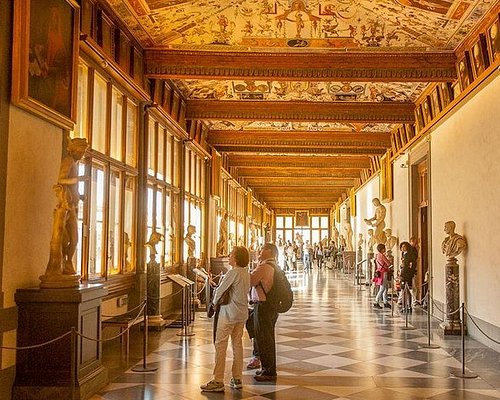
Art tours in Florence offer a captivating exploration of the city’s unparalleled artistic heritage, showcasing masterpieces that have defined the Renaissance and continue to inspire awe today. Guided by knowledgeable art experts, participants embark on a journey through renowned galleries such as the Uffizi Gallery and the Accademia Gallery. These tours immerse visitors in a world of artistic brilliance, where they encounter iconic works by Michelangelo, Leonardo da Vinci, Botticelli, Raphael, and other luminaries of the Renaissance era. The emphasis is not just on viewing art but also on understanding the historical, cultural, and artistic contexts that gave rise to these extraordinary creations. Guides provide invaluable insights into the techniques, symbolism, and significance of each artwork, transforming the tour into a profound educational experience. From Michelangelo’s David at the Accademia to Botticelli’s Birth of Venus at the Uffizi, art tours in Florence offer a profound appreciation for the city’s enduring legacy as a beacon of artistic excellence.
Uffizi Gallery Tour
- The Uffizi Gallery tour in Florence presents a treasure trove of notable artworks by some of the greatest artists in history. Visitors encounter iconic masterpieces such as Botticelli’s “The Birth of Venus” and “Primavera,” Leonardo da Vinci’s “Annunciation,” Michelangelo’s “Tondo Doni,” and Raphael’s “Madonna of the Goldfinch.” These artworks showcase the diversity and brilliance of Renaissance art, offering a glimpse into the artistic achievements of the era’s leading figures.
- Historical context is intricately woven into the Uffizi Gallery tour, enriching the experience with insights into the cultural, political, and social milieu of Renaissance Florence. Guides illuminate the patronage system that fueled artistic production, the rivalry between artists, and the significance of art in shaping societal values and ideals during that period. Understanding the historical backdrop enhances appreciation for the artworks and their enduring impact on art history.
Accademia Gallery Tour
- The highlight of the Accademia Gallery tour is undoubtedly Michelangelo’s iconic statue of David. This masterpiece of Renaissance sculpture captivates visitors with its imposing presence, meticulous detail, and symbolic significance. Guides delve into the artistic genius of Michelangelo, discussing his techniques, artistic vision, and the cultural symbolism embodied in David’s depiction.
- In addition to Michelangelo’s David, the Accademia Gallery houses other significant sculptures and paintings worth exploring. Visitors encounter Michelangelo’s “Prisoners” series, unfinished sculptures that offer insight into the artist’s creative process. The gallery also features works by artists such as Sandro Botticelli, Domenico Ghirlandaio, and Andrea del Sarto, providing a comprehensive view of Renaissance artistry beyond Michelangelo’s celebrated masterpiece.
Architecture Tours
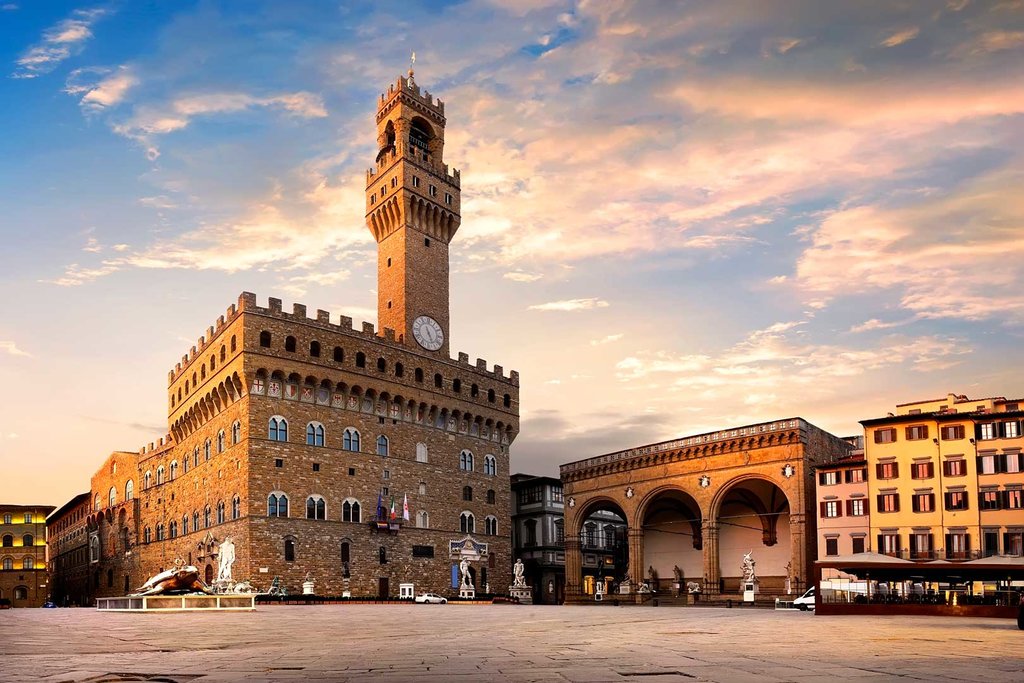
Architecture tours in Florence offer a captivating exploration of the city’s rich architectural heritage, showcasing iconic structures that reflect its historical and cultural significance. Guided by knowledgeable experts, participants embark on a journey through time, encountering architectural marvels from different periods, each with its own story to tell.
The Florence Cathedral (Duomo) stands as a testament to the city’s medieval grandeur, with Brunelleschi’s Dome dominating the skyline and symbolizing the city’s artistic and engineering prowess. Architecture tours often delve into the intricate details of this magnificent structure, tracing its construction and the innovations that made it possible.
Palazzo Vecchio, Florence’s historic town hall, is another highlight of architecture tours. This imposing Renaissance palace, with its fortified appearance and ornate interiors, reflects the political and cultural power of the Medici family and the city’s republican traditions. Participants explore its grand halls, courtyards, and art collections, gaining insights into Florence’s political history and artistic patronage.
The Palazzo Pitti, once the residence of the Medici rulers and now a museum complex, showcases opulent Renaissance and Baroque architecture. Architecture tours offer a glimpse into the palace’s lavish rooms, gardens, and galleries, highlighting the artistic achievements of the period and the lifestyle of Florence’s elite.
Beyond these iconic landmarks, architecture tours in Florence also uncover hidden gems and lesser-known architectural wonders, such as the Basilica of Santa Croce with its stunning frescoes and the elegant Ponte Santa Trinita spanning the Arno River.
Guides provide historical context, architectural insights, and fascinating anecdotes, making each tour a journey of discovery and appreciation for Florence’s architectural legacy. Whether admiring the harmonious proportions of Renaissance palaces, marveling at the engineering feats of medieval churches, or tracing the evolution of architectural styles, architecture tours offer a comprehensive and enlightening exploration of Florence’s built heritage.
Florence Cathedral Tour
- The Florence Cathedral, officially known as the Cathedral of Santa Maria del Fiore, is a magnificent example of Gothic architecture and one of Florence’s most iconic landmarks. The tour begins with an awe-inspiring view of the cathedral’s exterior, showcasing its elaborate facade adorned with marble panels, sculptures, and intricate details. Visitors also marvel at the Cathedral’s impressive components, including the massive Dome designed by Filippo Brunelleschi, which remains one of the largest brick domes ever constructed. The Baptistry of San Giovanni, with its renowned bronze doors by Lorenzo Ghiberti, is another highlight, providing insights into the city’s religious and artistic heritage.
- During the Florence Cathedral tour, participants are treated to historical and architectural insights that illuminate the significance of this monumental structure. Guides delve into the cathedral’s construction history, revealing the challenges faced by architects and artisans over centuries. They also discuss the symbolism embedded in the cathedral’s design, from the elaborate marble work to the intricate stained glass windows, offering a deeper appreciation for the spiritual and artistic dimensions of the Cathedral.
Palazzo Vecchio Tour
- Palazzo Vecchio, translated as the “Old Palace,” is Florence’s historic town hall located in the heart of the city’s Piazza della Signoria. The tour begins with an overview of the palace’s imposing exterior, characterized by its crenellated towers and fortress-like appearance, reflecting its origins as a seat of political power during the Renaissance. Participants learn about the palace’s evolution from a medieval fortress to a Renaissance palace, witnessing the architectural transitions that occurred over centuries.
- Inside Palazzo Vecchio, visitors are treated to a wealth of art collections and significant rooms that offer insights into Florence’s political and cultural history. The tour includes visits to the magnificent Hall of the Five Hundred (Salone dei Cinquecento), adorned with frescoes by Giorgio Vasari, and the opulent Apartments of the Elements (Appartamenti degli Elementi), showcasing lavish decorations and artworks commissioned by the Medici family. Guides share stories of political intrigue, artistic patronage, and the Medici dynasty’s influence, painting a vivid picture of Renaissance Florence within the walls of Palazzo Vecchio.
Medici Family Tours
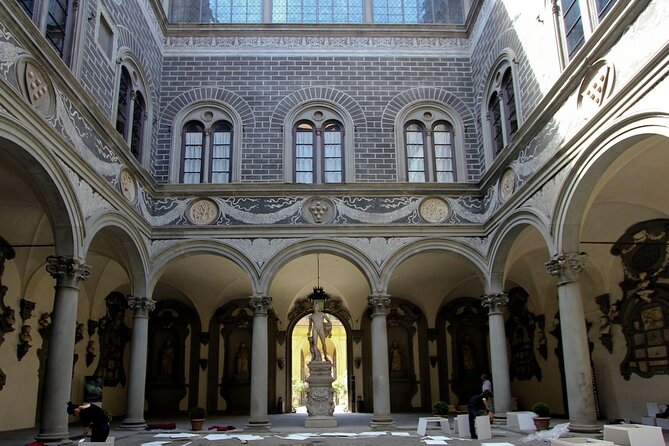
Embarking on a Medici Family tour in Florence is akin to stepping into the pages of a captivating historical saga. The Medici family, renowned for their immense wealth, political influence, and patronage of the arts, left an indelible mark on Florence’s cultural landscape during the Renaissance. Led by knowledgeable guides, participants of these tours are taken on a journey through time, visiting palaces like Palazzo Medici Riccardi and Palazzo Pitti, which served as the family’s residences and centers of power. These opulent palaces reveal the Medici’s lavish lifestyle and their role as influential patrons of artists such as Michelangelo, Botticelli, and Leonardo da Vinci. As the tour unfolds, visitors gain insights into the Medici dynasty’s rise to prominence, their political strategies, and the cultural renaissance they fostered, making the Medici Family tour a captivating exploration of Florence’s golden age.
Exploration of Medici-related sites
- Palazzo Medici Riccardi stands as a testament to the Medici family’s wealth and influence. This Renaissance palace served as their primary residence and the epicenter of their power during the 15th century. The tour of Palazzo Medici Riccardi unveils its opulent interiors, including the stunning Chapel of the Magi adorned with frescoes by Benozzo Gozzoli, showcasing the family’s patronage of the arts.
- Palazzo Pitti, acquired by the Medici in the 16th century, became their grandiose palace showcasing their refined tastes and artistic collections. The tour of Palazzo Pitti takes visitors through its lavish rooms, galleries, and gardens, offering a glimpse into the Medici’s luxurious lifestyle and their extensive art collections, which include works by Titian, Raphael, and Rubens.
- The Medici Chapels, located within the Basilica of San Lorenzo, are mausoleums dedicated to members of the Medici family. The tour of the Medici Chapels allows visitors to marvel at Michelangelo’s monumental sculptures, including the famous Medici Tombs, which epitomize the family’s enduring legacy and their contributions to Renaissance art.
Understanding the Medici family’s influence on Florence’s history and art
Exploring Medici-related sites provides a deeper understanding of the family’s profound impact on Florence’s history and art. The Medici were not only influential rulers but also passionate patrons of the arts, fostering a cultural renaissance that transformed Florence into a center of artistic innovation.
Through their patronage, the Medici supported renowned artists, architects, and scholars, commissioning masterpieces that adorned their palaces and public spaces across Florence. This patronage not only elevated the status of artists like Michelangelo, Leonardo da Vinci, and Botticelli but also contributed to the flourishing of Renaissance art and humanist ideals.
Furthermore, the Medici family’s political maneuvers and diplomatic strategies shaped Florence’s socio-political landscape, influencing alliances, trade, and governance. Their patronage of education and scholarship also contributed to advancements in science, literature, and philosophy, leaving a lasting imprint on Florence’s intellectual legacy.
By exploring Medici-related sites and understanding their multifaceted influence, visitors gain a comprehensive perspective on Florence’s golden age, where art, politics, and culture converged under the patronage of one of history’s most influential dynasties.
Cultural and Heritage Tours
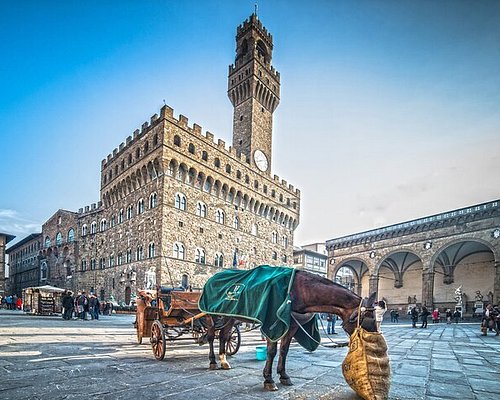
Embarking on a cultural and heritage tour in Florence is like delving into a treasure trove of timeless traditions, rich history, and diverse heritage. These tours offer a multifaceted exploration of Florence’s cultural tapestry, encompassing a range of experiences that showcase the city’s unique identity.
From culinary delights to ancient traditions, cultural and heritage tours in Florence provide a deep dive into the city’s vibrant lifestyle and storied past. Participants may visit local markets to discover Tuscan ingredients and learn about traditional cuisine during a food tour, or explore the city’s Jewish quarter to uncover centuries-old heritage and visit historic sites like the synagogue and Jewish museum.
Additionally, these tours shed light on Florence’s artisanal legacy, taking visitors to traditional workshops where skilled craftsmen create handmade goods using age-old techniques. Whether it’s leatherwork, ceramics, or jewelry, participants gain insights into Florence’s artisanal heritage and the craftsmanship that has been passed down through generations.
Moreover, cultural and heritage tours delve into Florence’s architectural wonders, historical neighborhoods, and lesser-known gems that contribute to the city’s rich cultural mosaic. Guides share stories, legends, and historical anecdotes, providing context and depth to each experience, making cultural and heritage tours an immersive and enlightening journey into Florence’s past and present.
Historic Food Tour
- A historic food tour in Florence offers a delightful focus on Tuscan cuisine and culinary traditions. Participants get to savor the flavors of Italy through tastings of regional specialties like fresh pasta, cured meats, cheeses, and olive oils. Guides share insights into the culinary techniques and ingredients that define Tuscan cooking, highlighting the region’s agricultural heritage and gastronomic diversity.
- One of the highlights of a historic food tour is the visits to local markets and eateries. Participants stroll through bustling markets like Mercato Centrale, where they can interact with vendors, sample seasonal produce, and learn about the importance of fresh, locally sourced ingredients in Tuscan cuisine. They also have the opportunity to dine at authentic trattorias and osterias, experiencing the warmth of Italian hospitality and savoring traditional dishes paired with regional wines.
Jewish Heritage Tour
- The Jewish Heritage tour in Florence delves into the city’s rich Jewish history, taking participants on an exploration of the Florence’s Jewish quarter. Guides provide insights into the vibrant Jewish community that has existed in Florence for centuries, highlighting their contributions to the city’s cultural and economic life.
- A key highlight of the Jewish Heritage tour is the visit to the historic synagogue and Jewish museum. Participants step inside the beautifully preserved synagogue, adorned with intricate decorations and religious symbols, and learn about the history of Jewish worship in Florence. The Jewish museum offers a deeper understanding of Jewish life, traditions, and experiences in Florence through exhibits, artifacts, and multimedia displays, providing a poignant glimpse into the resilience and cultural heritage of the Jewish community.
Conclusion
In conclusion, historical tours in Florence offer a captivating journey through the city’s rich tapestry of art, history, culture, and heritage. From exploring iconic landmarks like the Florence Cathedral and Palazzo Vecchio to immersing oneself in the masterpieces of the Uffizi Gallery and Accademia Gallery, these tours provide a comprehensive understanding of Florence’s remarkable legacy as a cradle of the Renaissance.
Walking tours offer intimate encounters with the city’s medieval and Renaissance history, while art tours unveil the genius of renowned artists and the artistic patronage of the Medici family. Architecture tours showcase Florence’s architectural wonders, from the majestic Duomo to the opulent Palazzo Pitti. Cultural and heritage tours delve into Tuscan cuisine, artisanal traditions, and the city’s diverse cultural heritage, offering a taste of authentic Florentine life.
Through these tours, visitors gain insights into Florence’s profound influence on art, architecture, politics, and culture during the Renaissance and beyond. Each tour paints a vivid picture of Florence’s golden age, where creativity, innovation, and humanism flourished, leaving an indelible mark on the world’s cultural heritage. Whether exploring ancient streets, admiring priceless artworks, or savoring Tuscan flavors, historical tours in Florence promise an enriching and unforgettable experience for every traveler.
